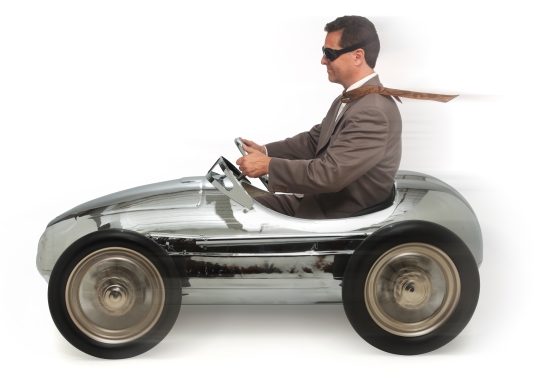Vehicle Safety Checklist for Family Road Trips
Whether traveling for summer vacations or the holidays, nine out of 10 travelers in the United States will choose a personal vehicle as their method of transportation.
Since so many people choose similar times of the year to travel (think Thanksgiving or the summer months), we are often sharing the roads with many other like-minded travelers when we go on a road trip.
Many of us will also have precious cargo aboard our vehicles – namely, our loved ones. It’s in every driver’s best interest, and the best interest of our families, to be as safe as possible while taking a long trip in a car, SUV, van or RV.
Before you depart on a road trip, here is a vehicle safety checklist to check off your list before you take to the road.
Before You Leave:
___ Your Car Serviced and Inspected
This is perhaps the most important step to make sure your vehicle is road-ready.
Ensure your vehicle is inspected for proper wiper fluid levels, battery levels, tire safety and brake safety.
Depending on the time of your last service, it might also be a good opportunity to have an oil change or tune-up performed on your vehicle.
___ Prepare for Emergencies
Make sure your car is stocked with items that could come in handy if you have an emergency on the road.
Bring appropriate clothing for the weather conditions in case you have to leave the vehicle, a flashlight, car repair tools, spare tires and medications for those who need them.
___ Stock Up on Provisions
Having food and water is helpful for a couple of reasons.
They are not only useful in cases of emergency, but they’re also a good way to cut down on stops and keep your riders happy.
___ Safe Packing
You’ll want to ensure the bags and personal items you pack for your road trip are stored safely inside and outside of your vehicle. Don’t place items in a spot obstructing the driver’s field of view.
Don’t overload the top of a vehicle. Make sure any item packed on top of or behind the vehicle is secured to eliminate the possibility of items falling or flying off of the vehicle and creating a hazard for other motorists.
Make sure all items inside the vehicle are also secured, so they won’t become a projectile in a crash or if you should brake quickly.
___ Plan for the Possibility of Traffic
Keep in mind you are likely to be sharing the road with many other travelers. The possibility of running into traffic jams is ever-present.
Give yourself plenty of time to reach your destination so you won’t be short on time or in a hurry. Be mindful of travel routes that take you through cities or heavily populated areas.
Try to arrange your travel so you’re not driving through these locations during peak travel times, such as morning or afternoon rush hours.
On The Road:
___ Designate a Navigator
GPS and navigation systems have become an important tool for every traveler.
They tell you which routes to take and, in some cases, alert you to thick traffic and possible alternative routes.
Using these devices while driving, however, is a very bad idea because it can divert your attention from the road ahead.
Designate one of your passengers to be in charge of using navigational devices so you won’t be distracted while driving.
___ Provide Headphones for Mobile Devices
If you have children or other travelers in your car who like to use mobile devices to watch videos, play games or listen to music, make sure they have headphones to cut down on the overall level of noise inside the vehicle.
Excessive noise inside a vehicle can be very distracting for a driver and increase the possibility of being involved in a crash.
___ Optimize Your Vehicle for Children
When you’re traveling with kids, you’ll want to regularly check the child safety locks and child safety seats to make sure everything is secure and comfortable for your young travelers.
___ Keep an Eye on Fuel
While it can be tempting to stay on the road for as long as possible in order to minimize travel time, it is never a good idea to let your fuel level fall too low.
Running out of gas is a sure-fire way to derail your plans and place you and your passengers in a dangerous situation on the side of a busy roadway.
If you aren’t sure where gas stations are located, use your navigation device for assistance. Don’t risk “making it until the next exit.”
___ Allow Others to Drive
On a long trip, a driver can quickly become fatigued if they are the sole driver.
If other capable drivers are on board, rotate the role of driver so every driver is well-rested and alert behind the wheel.
___ Use Others to Help You Stay Awake
The driver shouldn’t have to be the only one awake on a road trip. Make sure that another occupant is keeping an eye on both the road and the driver to eliminate the possibility of a driver’s falling asleep behind the wheel.
___ Stop When Needed
Taking breaks to get coffee or stretch your legs is always a smart move when on a long trip.
If the driver and passengers are all fatigued, then there is no shame in finding a hotel to stop for the night.
Don’t risk the possibility of a falling asleep at the wheel.
___ Be Mindful of Construction
Be aware of potential road construction areas on your route and plan accordingly.
These areas can be more dangerous and more likely to cause traffic jams and delays.
While you might not be able to plan ahead for all of these areas before a trip, be flexible when they pop up on a navigation device or if you are alerted to their presence via road signs.
Obviously, drivers should always adhere to safe driving practices and avoid speeding while on a road trip. Doing so makes your trip safer for you, your passengers and everyone else you share the road with.
Road trips are a staple of an American family’s activities. Plan ahead, be flexible and be patient with any obstacles that might come your way.






